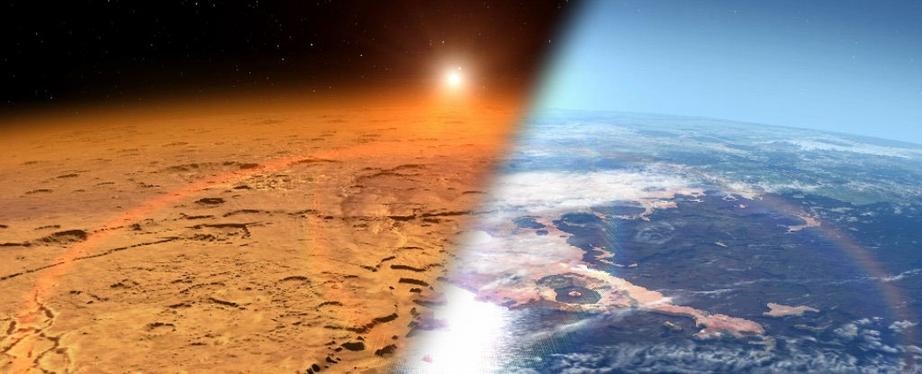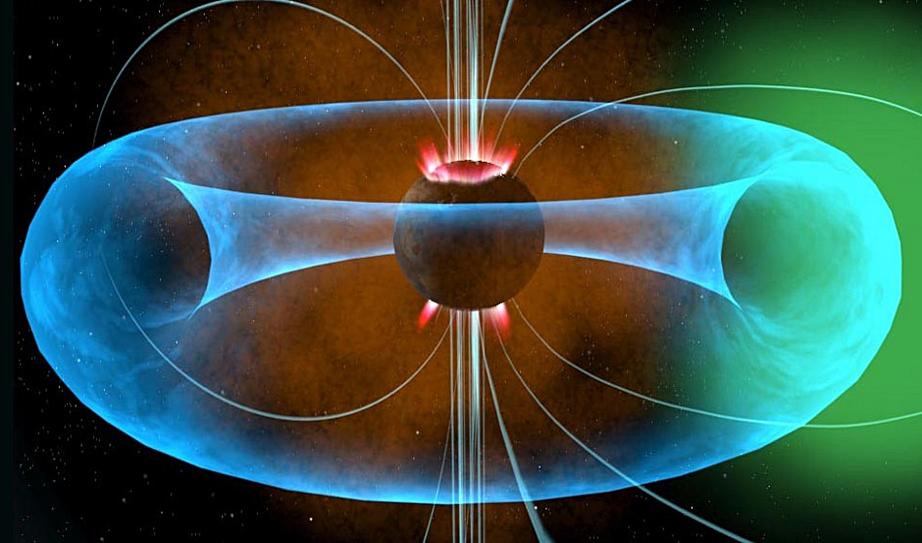NASA wants to launch a giant magnetic field to make Mars habitable
So crazy it just might work.
NASA scientists have proposed a bold plan that could give Mars its atmosphere back and make the Red Planet habitable for future generations of human colonists.

By launching a giant magnetic shield into space to protect Mars from solar winds, the space agency says we could restore the Red Planet's atmosphere, and terraform the Martian environment so that liquid water flows on the surface once again.
Mars may seem like a cold, arid wasteland these days, but the Red Planet is thought to have once had a thick atmosphere that could have maintained deep oceans filled with liquid water, and a warmer, potentially habitable climate.
Scientists think Mars lost all of this when its protective magnetic field collapsed billions of years ago, and solar wind – high-energy particles projected from the Sun – has been stripping the Red Planet's atmosphere away ever since.
Now, new simulations by NASA suggest there could be a way to naturally give Mars its thick atmosphere back – and it doesn't require nuking the Red Planet into submission, as Elon Musk once proposed.
Instead, the space agency thinks a powerful-enough magnetic shield launched into space could serve as a replacement for Mars's own lost magnetosphere, giving the planet a chance to naturally restore its own atmosphere.
In new findings presented at the Planetary Science Vision 2050 Workshop last week, NASA's Planetary Science Division director, Jim Green, said launching an "artificial magnetosphere" into space between Mars and the Sun could hypothetically shield the Red Planet in the extended magnetotail that trails behind the protective field.
"This situation then eliminates many of the solar wind erosion processes that occur with the planet's ionosphere and upper atmosphere allowing the Martian atmosphere to grow in pressure and temperature over time," the researchers explain in an accompanying paper.
While the team acknowledges that the concept might sound "fanciful", they point to existing miniature magnetosphere research being conducted to protect astronauts and spacecraft from cosmic radiation, and think that the same technology on a larger scale could be used to shield Mars.
"It may be feasible that we can get up to these higher field strengths that are necessary to provide that shielding," Green said in his presentation.
"We need to be able then to also modify that direction of the magnetic field so that it always pushes the solar wind away."
In the team's simulations, if the solar wind were counteracted by the magnetic shield, Mars's atmospheric losses would stop, and the atmosphere would regain as much as half the atmospheric pressure of Earth in a matter of years.
As the atmosphere becomes thicker, the team estimates Mars's climate would become around 4 degrees Celsius (7.2 degrees Fahrenheit) warmer, which would be enough to melt carbon dioxide ice over the Red Planet's northern polar cap.
If this happened, the carbon in the atmosphere would help to trap heat like it does on Earth, triggering a greenhouse effect that could melt Mars's water ice, giving the Red Planet back its liquid water in the form of flowing rivers and oceans.
If all of this were to occur as the team anticipates – and admittedly, that's a pretty fantastical if – it's possible that, within the space of a couple of generations, Mars could regain some of its lost Earth-like habitability.
"This is not terraforming as you may think of it where we actually artificially change the climate, but we let nature do it, and we do that based on the physics we know today," Green said.
The team acknowledges that the plan is largely hypothetical at this point, but it's a pretty amazing vision for what might be possible in the years ahead. The researchers intend to keep studying the possibilities to get a more accurate estimate of how long the climate-altering effects would take.
If the concept does prove workable, there's no telling just how much it would alter the prospects of colonising Mars in the future.
"Much like Earth, an enhanced atmosphere would: allow larger landed mass of equipment to the surface, shield against most cosmic and solar particle radiation, extend the ability for oxygen extraction, and provide 'open air' green-houses to exist for plant production, just to name a few," the researchers explain.
"If this can be achieved in a lifetime, the colonisation of Mars would not be far away."
The findings were presented at the Planetary Science Vision 2050 Workshop.

